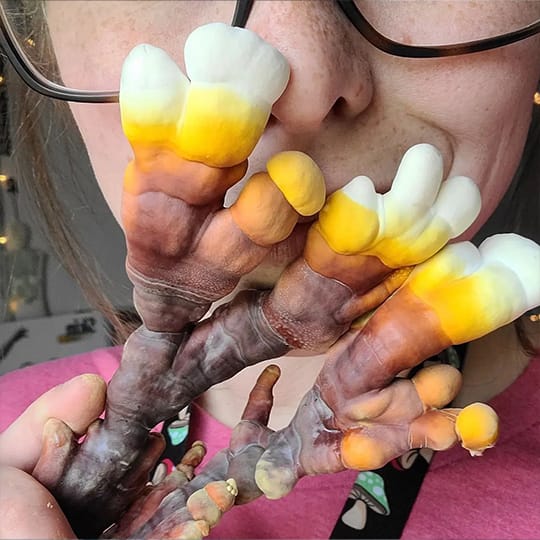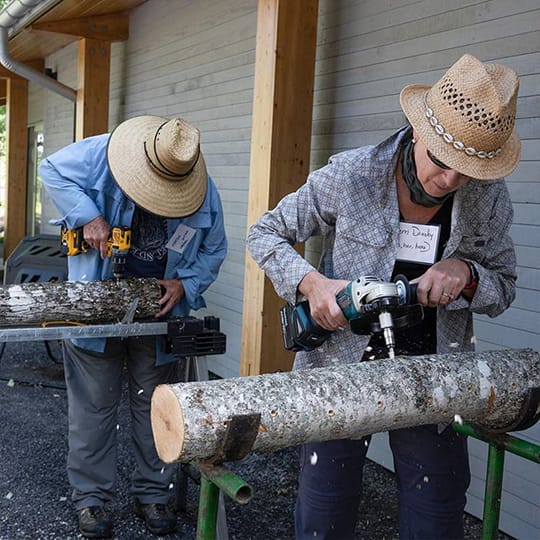Organic Chestnut Mushroom Sawdust Spawn
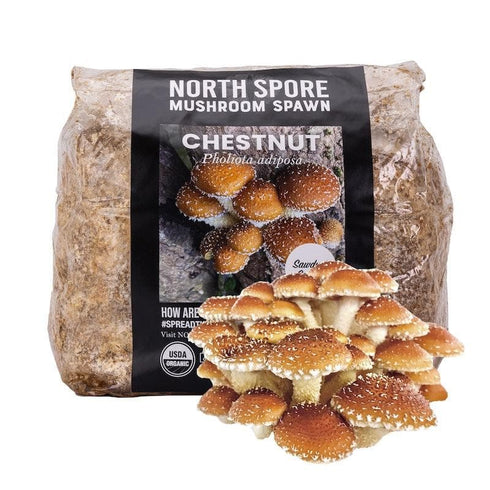
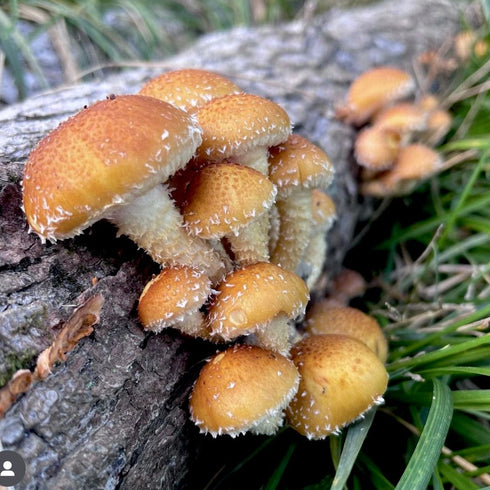
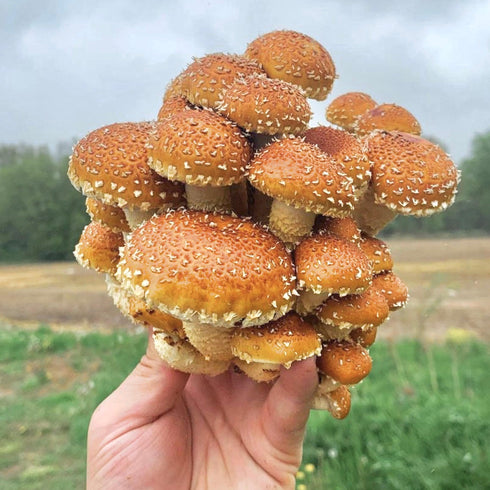





| Skill level | Intermediate |
| Grow location | Outdoors |
| Spawn shelf life | 6 months (refrigerated) |
| Bag weight | 5.5 lbs |
| Incubation | Logs: 12-18 months |
| Fruiting temps | 60-70°F |
| Best log type | See wood chart below |
Chestnut (Pholiota adiposa) is a popular cultivated mushroom in Japan. It produces velvety, small-to-medium, delightfully speckled caps resembling the color of their namesake nut. When cooked, they have a woodsy aroma, a meaty heaviness, and a rich, nutty, mildly-sweet flavor. Chestnut mushrooms aren't too difficult to cultivate, but can pose some minor challenges with identification.
Chestnuts are not ideal for those unfamiliar with how to properly identify different mushrooms species or for first time cultivators. However, they can be quite rewarding to grow for those with some experience growing other mushroom species.
"5 of the Best Chestnut Mushroom Recipes"
Recommended use:
- Chestnut sawdust spawn can be used for log projects and/or container, and bucket projects.
- Chestnut sawdust spawn must be combined with a substrate (like hardwood chips) or used in log inoculation in order to fruit.
- If growing on logs, one bag of sawdust spawn will reliably inoculate up to 20 logs. (You can calculate how much you'll need here.)
Chestnut log chart:
| BEST WOOD SPECIES* | Aspen, Beech, Birch, Cottonwood, Hophornbeam, Hard Maple, Oak, Sweetgum |
| OTHER SUITABLE SPECIES | Alder, Ash, Basswood, Buckeye, Cherry, Elm, Hackberry, Hornbeam, Mulberry, Willow |
| AVOID | Hemlock |
Upon receiving your spawn:
Remove it from the shipping box as soon as possible. Then, unfold the top of the bag, making room for air space. It's also important to check and confirm that the filter patch is not obstructed. This will help the organism breathe and continue to thrive!
Scroll down for cultivation, inoculation, and storage guides.
-
To grow on logs using sawdust spawn, you will need a Log Inoculation Tool, Log Sealing Wax, and Wax Daubers.
For larger log projects you may also want to purchase an Angle Grinder Adapter and specialized 12mm drill bit.
-
Click here to download our pamphlet on growing mushrooms on logs and totems.
Click here to download our pamphlet on outdoor bed cultivation using sawdust spawn.
Click here to learn how to grow in buckets and containers.
-
Logs:
Chestnuts work well with the Stump and Log methods in maple and oak logs. After a 1-year colonization period above ground, Chestnut logs may be buried under 2 inches of top soil. Mushrooms fruit from logs and will emerge from the soil.
Outdoor beds:
Click here to learn how to grow in outdoor beds.
Containers:
Click here to learn how to grow in buckets and containers.
-
If you don’t plan to use your chestnut mushroom sawdust spawn right away, store in the refrigerator. Use within 6 months of receipt.
-
"5 of the Best Chestnut Mushroom Recipes"
Once cultivated, the Chestnut mushroom has a full flavor that is evoked with thorough cooking. We recommend you use its rich, nutty flavor as a compliment to autumn soups. Chestnut mushrooms work best when sautéing and simmering, and are delicious in a variety of soups, stews, and casseroles.
CAUTION: Be careful to properly identify these mushrooms when harvesting and before consuming. Chestnuts have poisonous lookalikes, so make sure you are familiar with the deadly Galerina autumnalis.
-
All our spawn is made using organic cultures from our own culture bank. Our sawdust spawn is handmade from a blend of locally sourced, all-natural, organic, and non-GMO woods and supplements from farms and forests in New England and North America.
-
If you’re going to consume home-grown mushrooms, make sure to cook your fresh mushrooms thoroughly with heat. If it is your first time eating this species, it is best to start with a small amount to check for allergies, even if cooked.
CAUTION: Be careful to properly identify these mushrooms when harvesting and before consuming. Chestnuts have poisonous lookalikes, so make sure you are familiar with the deadly Galerina autumnalis.
*Wood recommendations are based on our own testing. You may have different results experimenting with other wood species.
You may also like
- Reviews
- Questions
Thank you for submitting a review!
Your input is very much appreciated. Share it with your friends so they can enjoy it too!
Chestnut mushroom
This is my first attempt at growing mushrooms and the chestnut mushrooms intrigued me because of the medicinal aspect of the mushroom. I did not grow this mushroom on a log tho and im not sure if my results came out correctly or when I should harvest them.
New to growing - easy and lovely!
I started off with oysters in the spring and they grew so well I decided to try something a little different. I was so happy that these grew really well and they were so tender and tasty when I sauteed them. I grew them in a loose substrate, not on a log. I highly recommend them and they make good a beginner project.
Clueless and excited
These guys have been so helpful with my questions. I didn’t know which spawn would be good for my wood chip beds but they answered all my questions. All the spawn I’ve ordered has been healthy from what I’ve read online and I’m just waiting for it to fruit!
North Spore should be the go-to for everyone!
After a year and a half as a North Spore customer, I just can't say enough great things about them. Their customer service, continuing education, and products are all top-notch. And my latest purchase of the chestnut grain spawn is no different. While I haven't fruited yet, colonization after transfers is progressing rapidly. As always, highly recommended.
Fun little guys
These beautiful mushrooms didn't seem harder to grow than the others. Just have to partially bury the logs and keep in the moist shade. So pretty and tasty! (Always achieve positive ID.)





